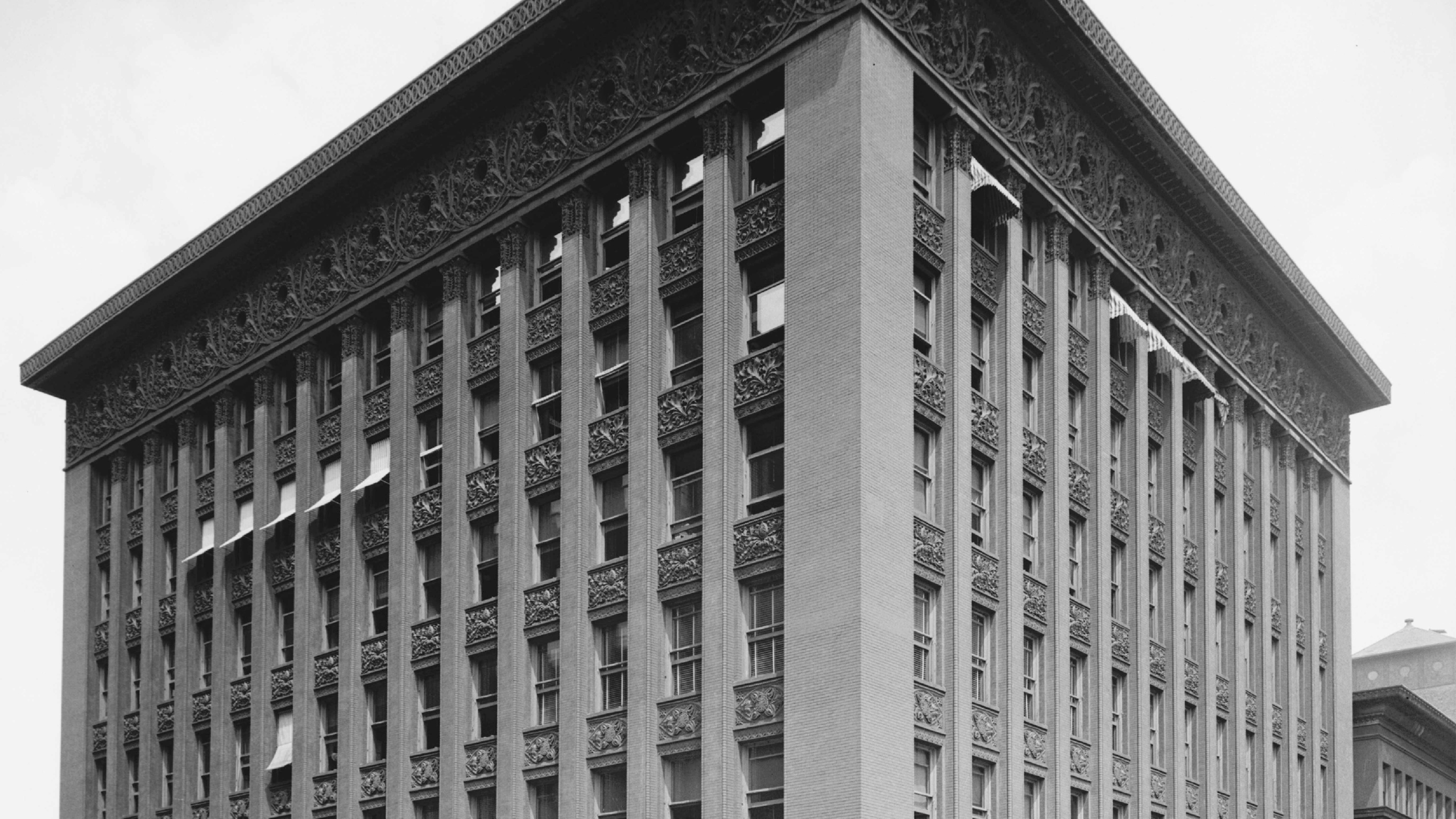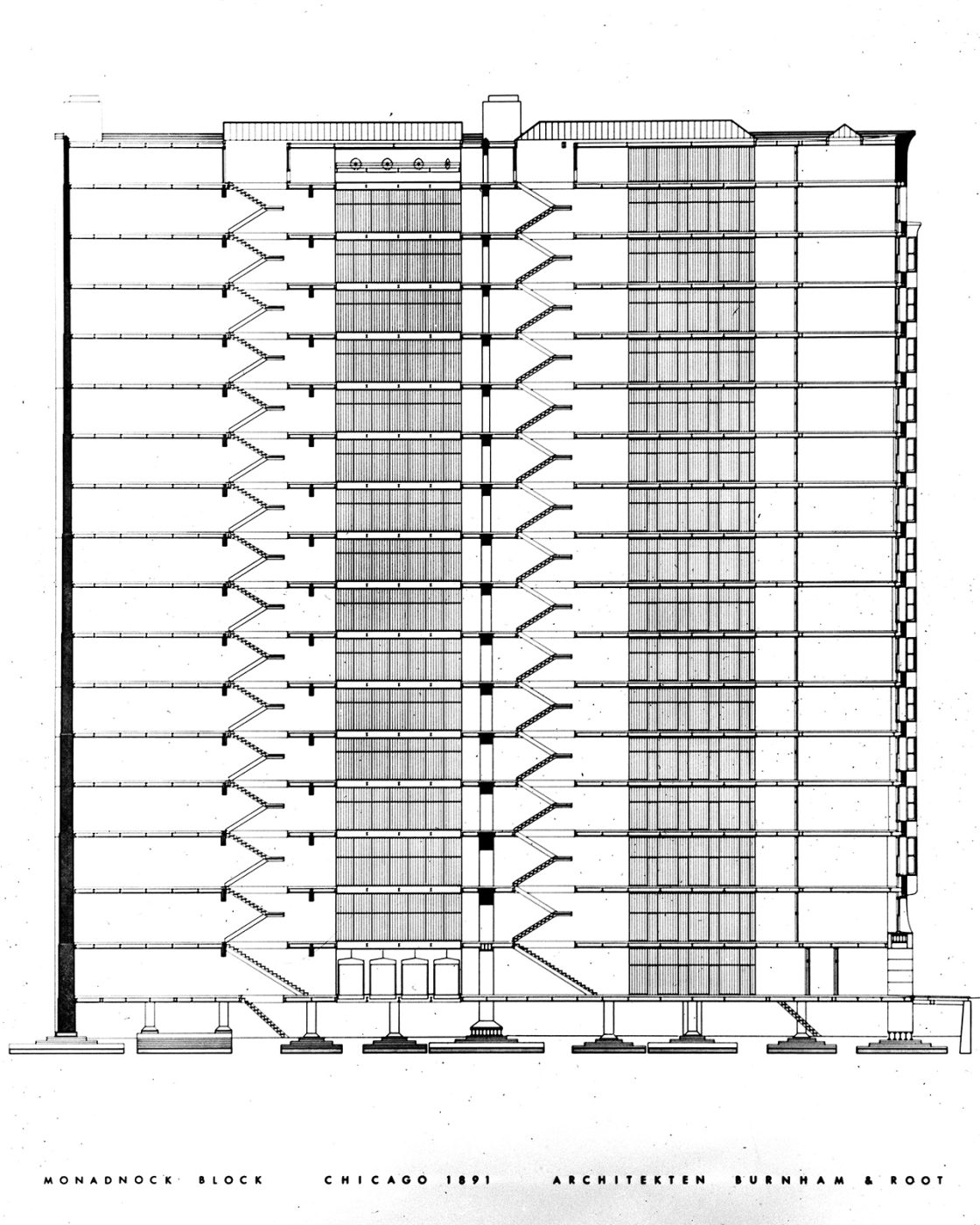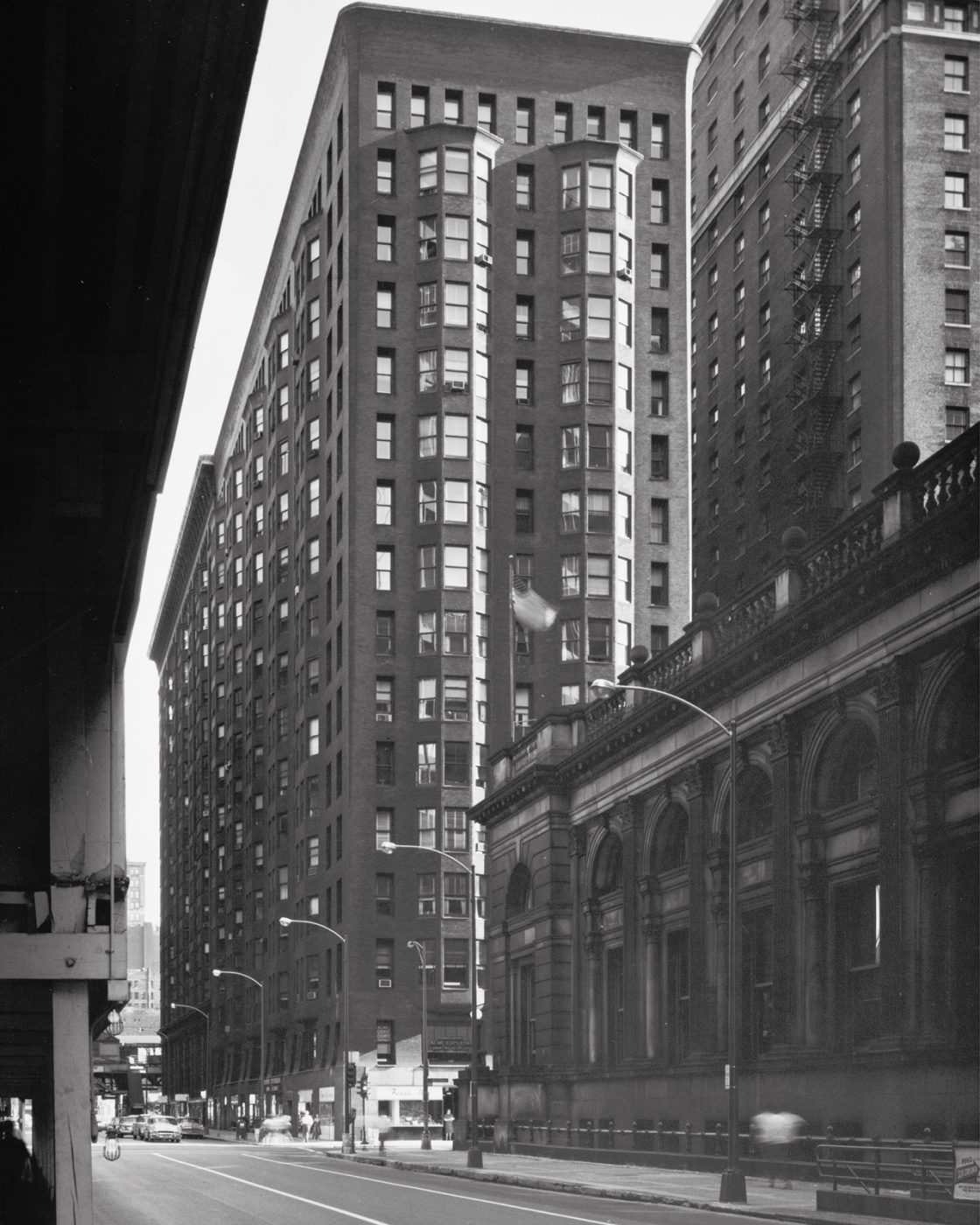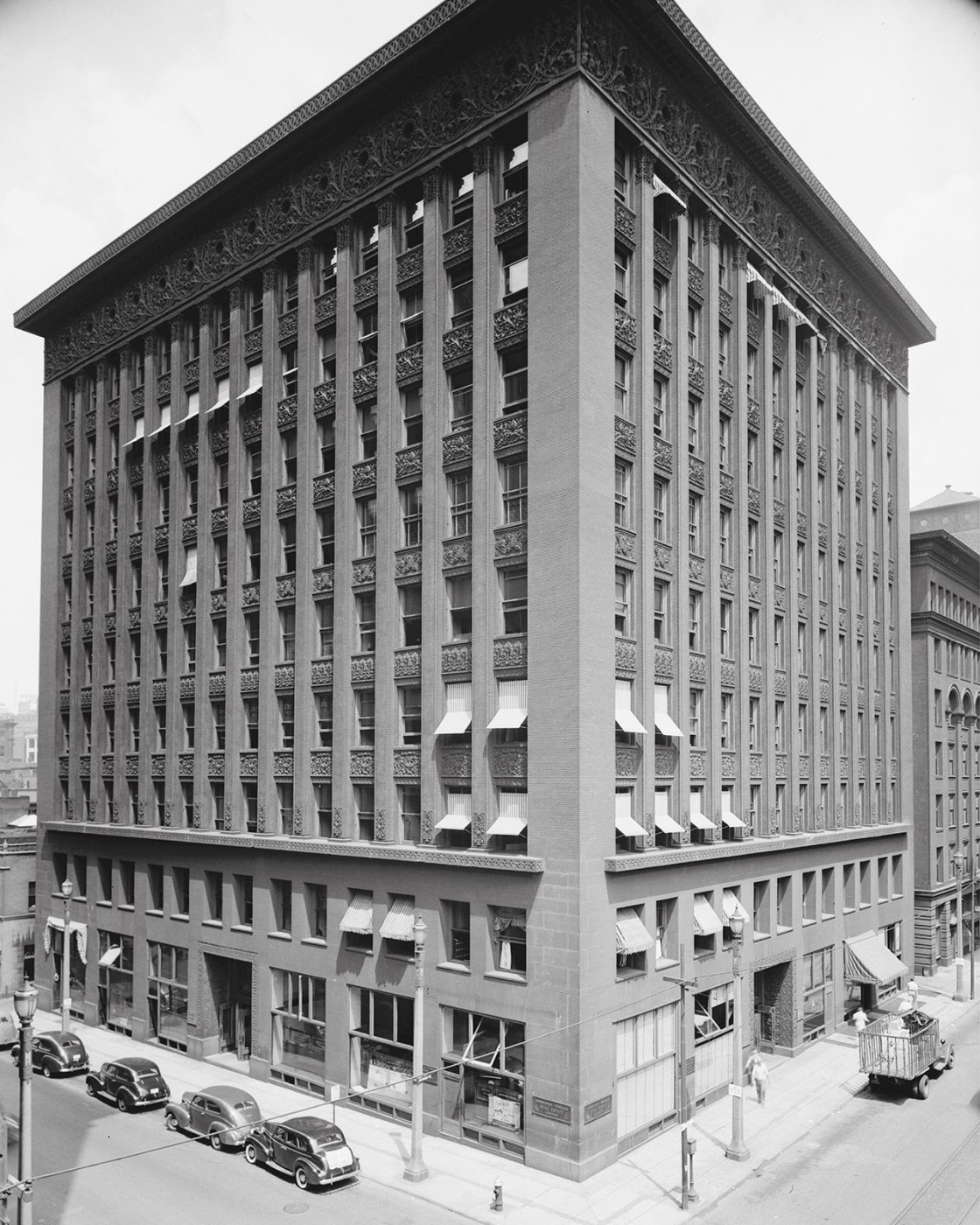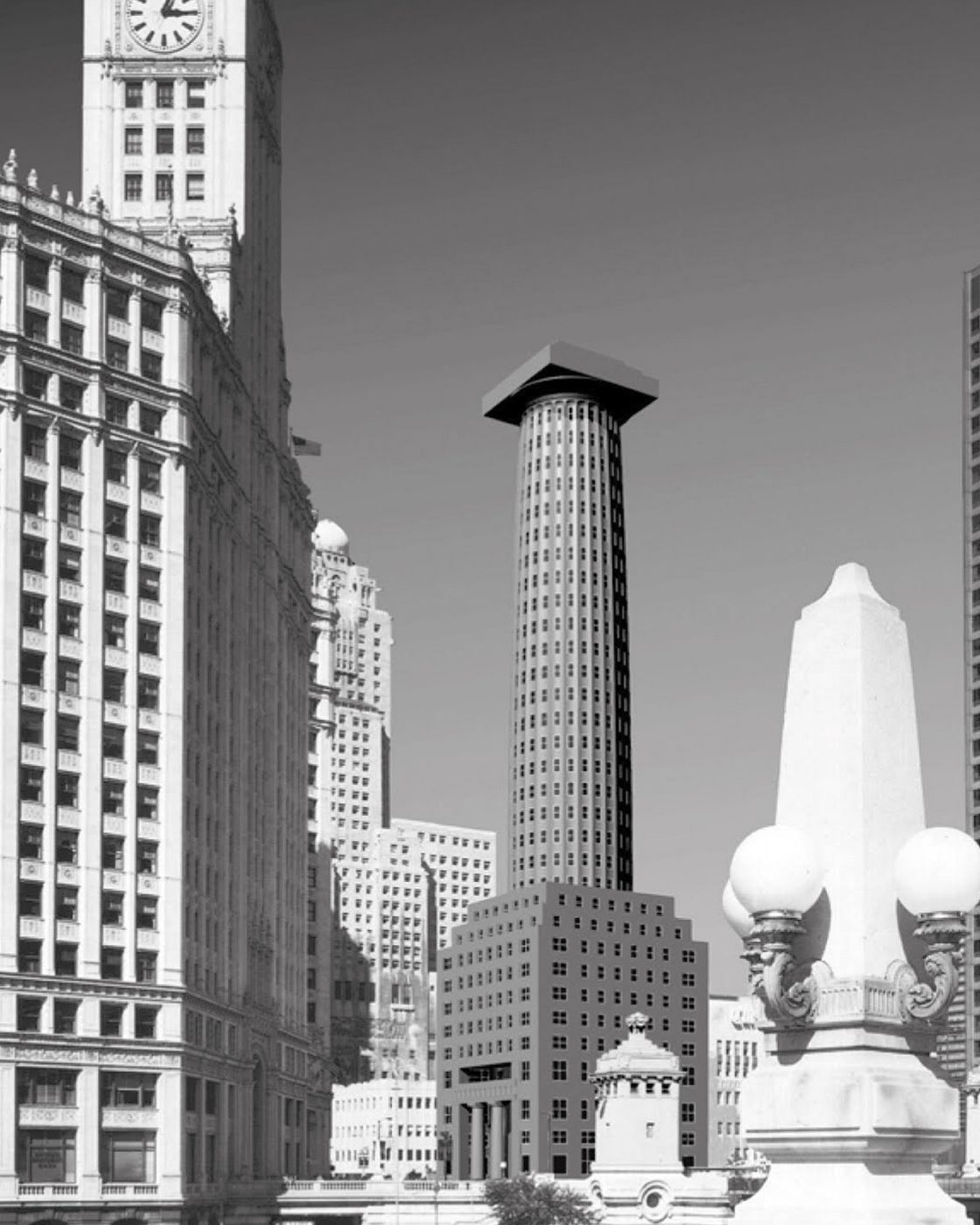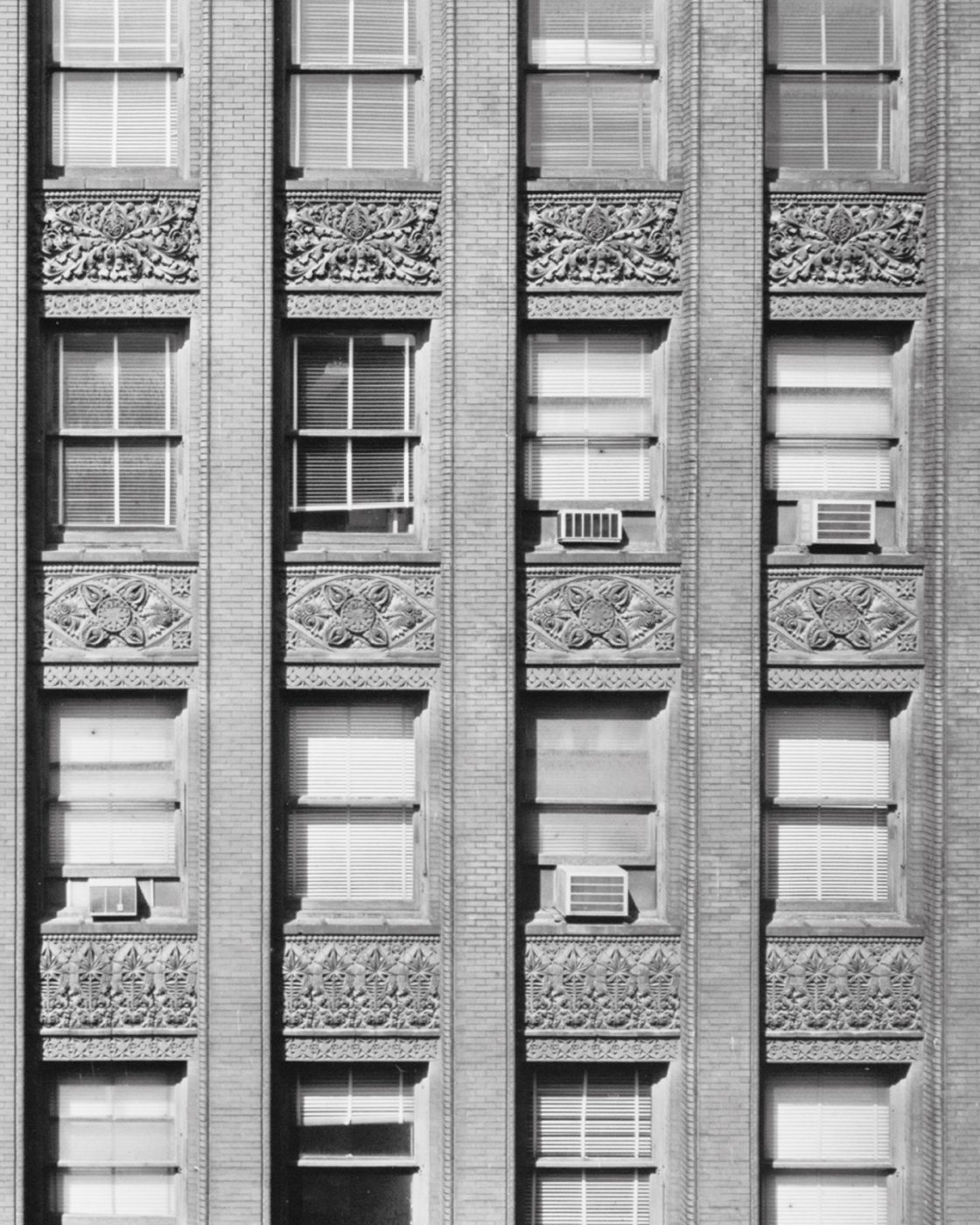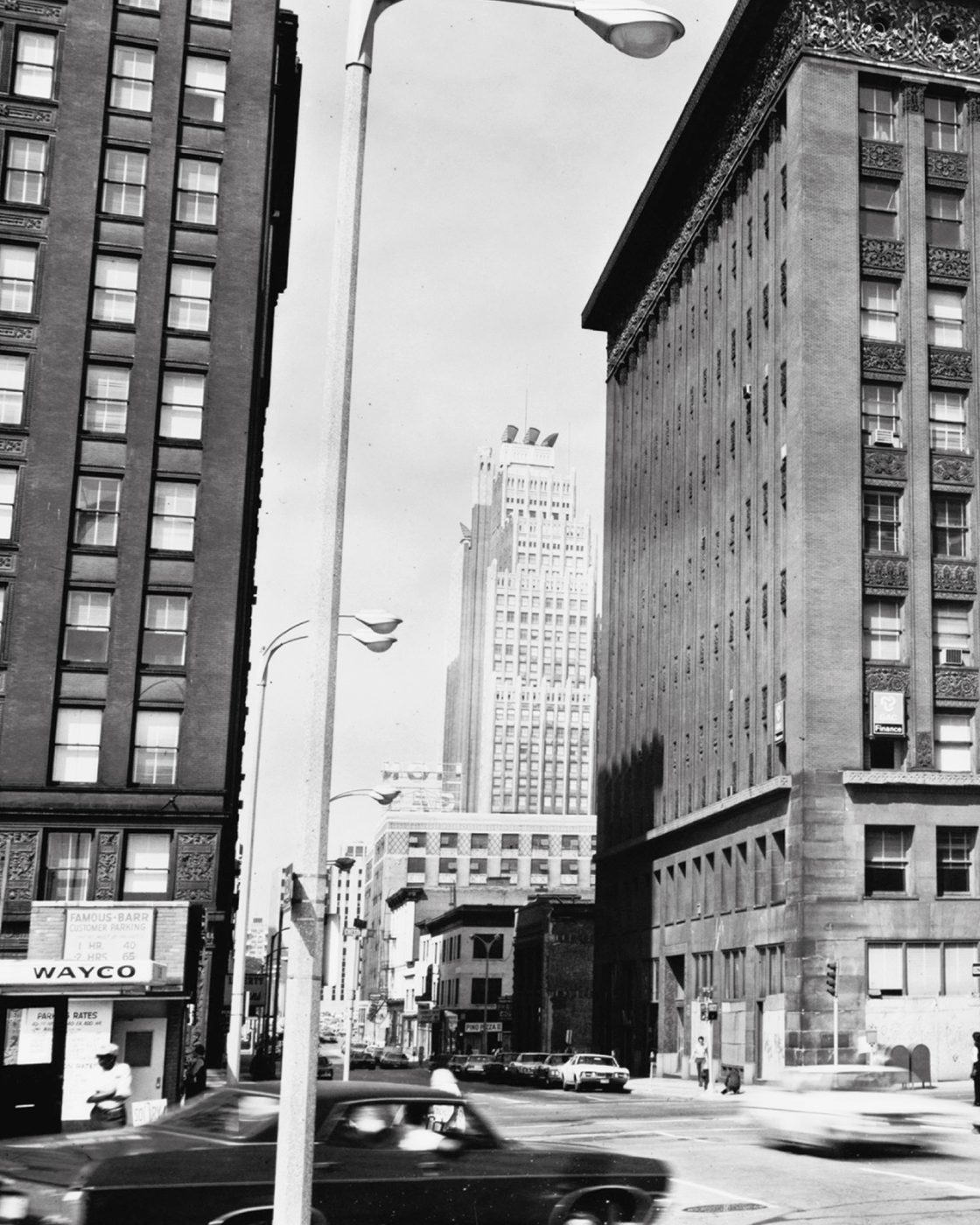All of these critics and theorists agree, however, positively, unequivocally, in this, that the tall office building should not, must not, be made a field for the display of architectural knowledge in the encyclopedic sense; that too much learning in this instance is fully as dangerous, as obnoxious, as too little learning; that miscellany is abhorrent to their sense; that the sixteen-story building must not consist of sixteen separate, distinct, and unrelated buildings piled one upon the other until the top of the pile is reached.
To this latter folly I would not refer were it not the fact that nine out of every ten tall office buildings are designed in precisely this way in effect, not by the ignorant, but by the educated. It would seem, indeed, as though the “trained” architect, when facing this problem, were beset at every story, or, at most, every third or forth story, by the hysterical dread lest he be in “bad form;” lest he be not bedecking his building with sufficiency of quotation from this, that, or the other “correct” building in some other land and some other time; lest he be not copious enough in the display of his wares; lest he betray, in short, a lack of resources. To loosen up the touch of this cramped and fidgity hand, to allow the nerves to calm, the brain to cool, to reflect equably, to reason naturally, seems beyond him; he lives, as it were, in a waking nightmare filled with the disjecta membra of architecture. The spectacle is not inspiriting.
As to the former and serious views held by discerning and thoughtful critics, I shall, with however much of regret, dissent from them for the purpose of this demonstration, for I regard them as secondary only, non-essential, and as touching not at all upon the vital spot, upon the quick of the entire matter, upon the true, the immovable philosophy of the architectural art.
This view let me now state, for it brings to the solution of the problem a final, comprehensive formula:
All things in nature have a shape, that is to say, a form, an outward semblance, that tells us what they are, that distinguishes them from ourselves and from each other.
Unfailingly in nature these shapes express the inner life, the native quality, of the animal, tree, bird, fish, that they present to us; they are so characteristic, so recognizable, that we say simply, it is “natural” it should be so. Yet the moment we peer beneath this surface of things, the moment we look through the tranquil reflection of ourselves and the clouds above us, down into the clear, fluent, unfathomable depth of nature, how startling is the silence of it, how amazing the flow of life, how absorbing the mystery! Unceasingly the essence of things is taking shape in the matter of things, and this unspeakable process we call birth and growth. Awhile the spirit and the matter fade away together, and it is this that we call decadence, death. These two happenings seem jointed and interdependent, blended into one like a bubble and its iridescence, and they seem borne along upon a slowly moving air. This air is wonderful past all understanding.
Yet to the steadfast eye of one standing upon the shore of things, looking chiefly and most lovingly upon that side on which the sun shines and that we feel joyously to be life, the heart is ever gladdened by the beauty, the exquisite spontaneity, with which life seeks and takes on its forms in an accord perfectly responsive to its needs. It seems ever as though the life and the form were absolutely one and inseparable, so adequate is the sense of fulfillment.
Whether it be the sweeping eagle in his flight, or the open apple-blossom, the toiling workhorse, the blithe swan, the branching oak, the winding stream at its base, the drifting clouds, over all the coursing sun, form ever follows function, and this is the law. Where function does not change form does not change. The granite rocks, the ever-brooding hills, remain for ages; the lightning lives, comes into shape, and dies in a twinkling.
It is the pervading law of all things organic and inorganic, of all things physical and metaphysical, of all things human and all things superhuman, of all true manifestations of the head, of the heart, of the soul, that the life is recognizable in its expression, that form ever follows function. This is the law.
Shall we, then, daily violate this law in our art? Are we so decadent, so imbecile, so utterly weak of eyesight, that we cannot perceive this truth so simple, so very simple? Is it indeed a truth so transparent that we see through it but do not see it? It is really then, a very marvelous thing, or is it rather so commonplace, so everyday, so near a thing to us, that we cannot perceive that the shape, form, outward expression, design, or whatever we may choose, of the tall office building should in the very nature of things follow the functions of the building, and that where the function does not change, the form is not to change?
